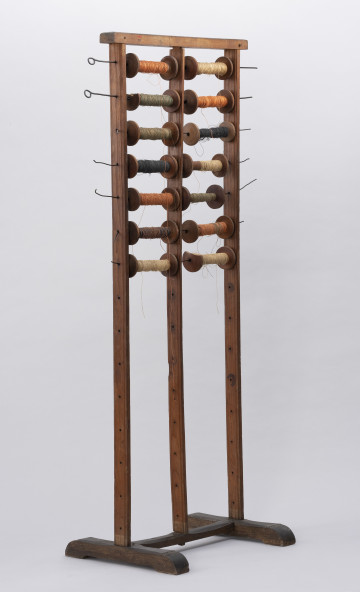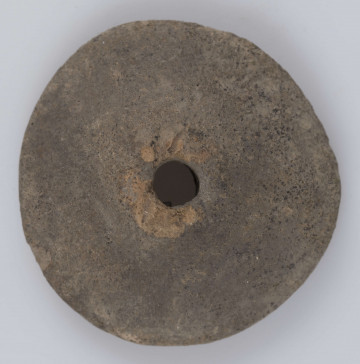
Weaving shuttle
1880 — 1920
National Museum in Szczecin
Part of the collection: Stone Age
The reconstructed and plaster-filled clay spindle whorl was discovered during excavations in Ustowo, a site that has been repeatedly inhabited over several millennia. In the Younger Stone Age, Bronze Age and Early Middle Ages, there were extensive settlements here, and at an unspecified time also a cemetery, of which the remains of human skeletons have survived. Spinners made from clay or rock materials belong to the spinning accessories. Their shape varies from flat to high clay discs with a hole, which was used to put on a spindle. Some of them are of aesthetic value and resemble large, ornamented beads - elements of necklaces or earrings. Spindles were used to weigh down wooden spindles, which facilitated their rotation and prevented the thread from slipping. Next to weaving weights they are the most frequently discovered evidence of textile production of prehistoric communities. Exploration and archaeological research at the multicultural site in Ustowo were carried out several times. The first one was undertaken by Reinhold Richter, the caretaker of archaeological monuments in the then district of Rędowo (German: Kreis Randow). Between 1926 and 1941, during enormous earthworks on a plateau descending towards the Oder Valley and the Bukowa River, he recorded numerous remains of Neolithic, Bronze Age and early medieval settlements. Further devastation of the site necessitated the excavation of the site, which in 1957, 1960 and later was led by Kazimierz Siuchniński, PhD, then an employee of the Szczecin Museum, and later a university lecturer in Poznań. The spindle whorl was excavated in 1957 from an economic cavity associated with the settlement of the Funnel Beaker culture. The relics of a settlement of this culture discovered in Ustowo belong to the youngest phase of this culture, lasting until the end of the Stone Age.
Krzysztof Kowalski
Author / creator
Dimensions
cały obiekt:
Object type
spindle whorl
Technique
manual modelling, modelling, hand made
Material
clay
Origin / acquisition method
acquisition
Creation / finding place
Owner
National Museum in Szczecin
Identification number
Location / status

1880 — 1920
National Museum in Szczecin

1801 — 1939
National Museum in Szczecin

National Museum in Lublin
DISCOVER this TOPIC
National Museum in Szczecin
DISCOVER this PATH
Educational path